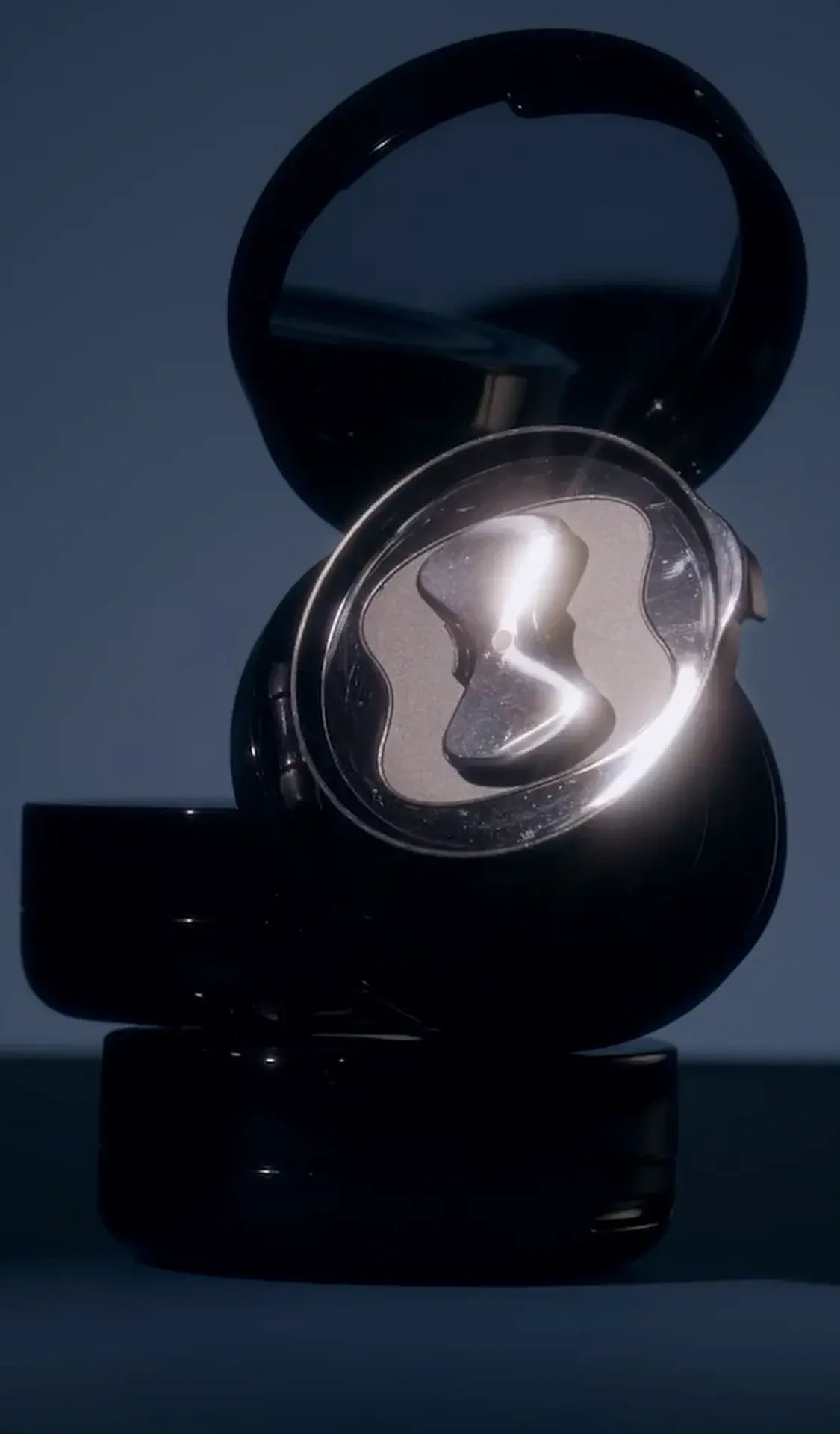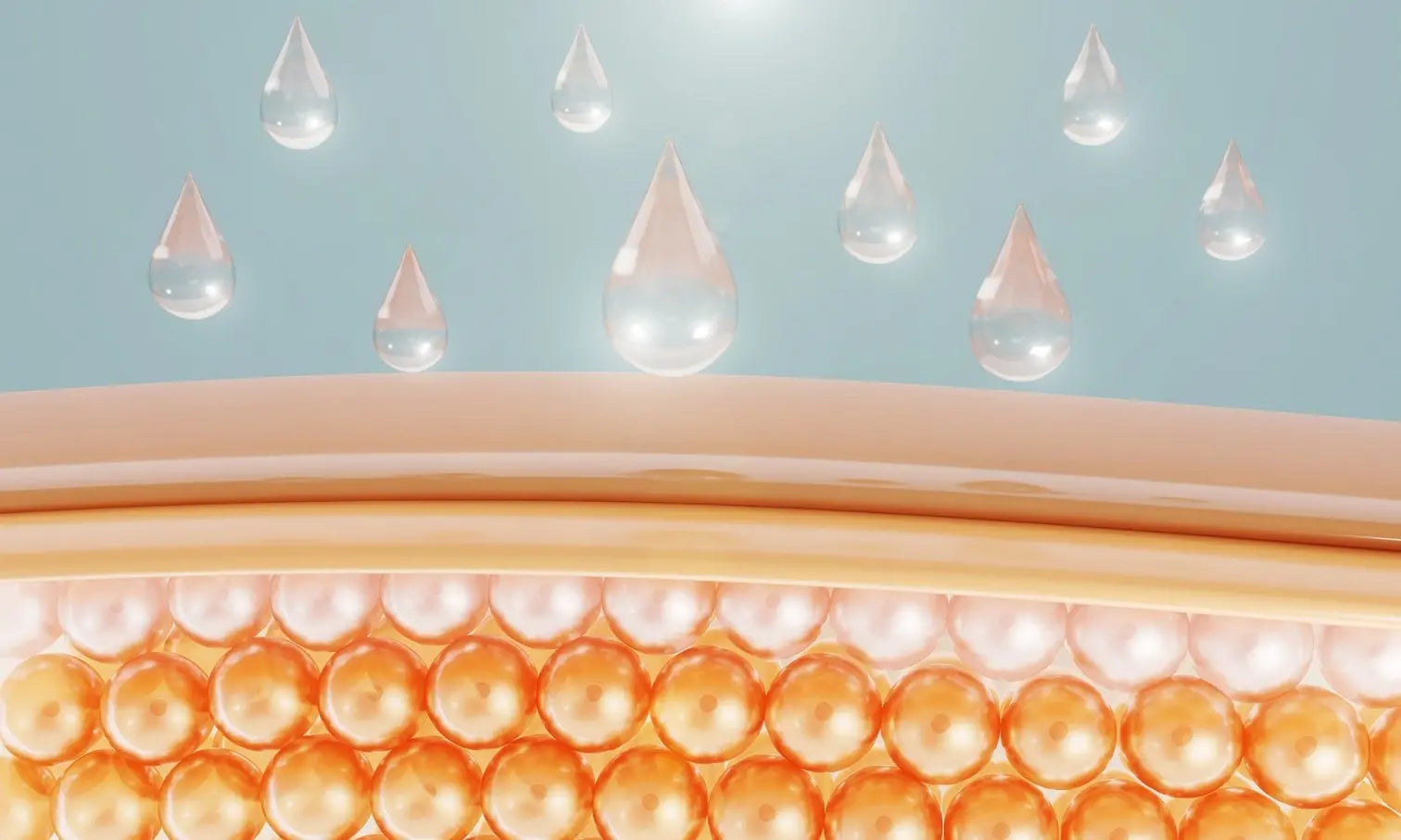Skincare is going through some big changes! We’re no longer just talking about moisturizing and SPF – we’ve entered the age of high-tech skincare with a whole arsenal of powerful actives, each promising to turn back the clock on aging skin.
Some of the most promising developments in recent years have been growth factors and peptides. But what are these ingredients, and how do they work?
What Are Growth Factors?
Growth factors (GFs) are proteins found naturally in the body. Think of them as chemical messengers that facilitate communication between cells. They help mediate cell growth, proliferation, and differentiation.[1]
In the context of skincare, growth factors are pivotal for wound healing and tissue repair. When your skin is wounded, growth factors accumulate at the injury site to initiate and coordinate the healing process. They can reverse the effects of collagenases, increase collagen levels, and decrease tissue inflammation.[1]
As you age, the production and levels of growth factors in your skin decline. This reduction can lead to slower wound healing and increased visible signs of aging. This has made growth factors promising candidates for anti-aging treatments.[2] However, not all growth factors are delivered in the same way. Growth factors can, therefore, be broken into two main categories:
Topical Growth Factors
Topical growth factor products sound pretty exciting, right? But here’s the thing: to work their magic, they have to get through the skin’s outer layer, called the stratum corneum. Unfortunately, most growth factors are on the larger side and are hydrophilic, which means they don’t easily penetrate the skin.[1,3]
While topical growth factor products have shown some improvement in collagen levels, skin tone, and texture in clinical studies, these results are often observed in individuals with compromised skin barriers or after skin treatments like laser therapy, microneedling, or chemical peels.[1] However, for those with healthy, intact skin barriers, these products might not deliver as much of a noticeable change since the growth factors can’t reach the dermis and beyond, where they will have an impact.
Injectable Growth Factors
In contrast, injected growth factors, such as those delivered through Platelet-Rich Plasma (PRP) therapy, bypass the epidermal barrier, offering direct delivery to the deeper layers of skin. When injected directly into the dermis, these growth factors can accelerate collagen and elastin production, producing firmer, more youthful-looking skin.[1,4] This method can deliver the active ingredients exactly where needed, ensuring that the growth factors have maximum impact.
Injectable growth factors aren't just great for your skin; they can also help treat hair loss. Your hair’s health reflects your skin’s regenerative capacity, and PRP therapy has been shown to improve both the health of your scalp and the hair follicles within. The growth factors within PRP can prevent apoptosis and enhance the survival rate of hair follicle cells. This enhances follicular regeneration, improves vascularization, and extends the anagen phase of hair growth, stimulating thicker, healthier hair growth.
These treatments can have varying results and effects because of the variety of growth factors available.
Challenges with Growth Factors
A big challenge with growth factors is that they’re pretty fragile. These proteins are sensitive molecules that can degrade under various conditions, including exposure to temperature fluctuations and changes in pH. Many growth factors need to be stored at cooler temperatures to maintain their efficacy outside of their natural environment, and their degradation can occur quickly when stored at room temperature.[5]
In practical terms, this means that growth factors in topical products may lose their potency before you even apply them. Therefore, it's crucial to research the stability of the growth factors used in your skincare products and treatments, ensuring that they are stored and delivered correctly to provide optimal results.
Growth factors can work wonders for your skin, but to see results, it’s best to get them through in-office treatments like PRP. This way, they bypass the skin barrier and are less likely to denature since they are isolated in the office.
What Are Peptides?
Peptides are tiny chains of amino acids, typically composed of fewer than 40. Like growth factors, peptides can act as chemical messengers within the body. They can also be precursors for larger proteins like collagen and elastin, vital to maintaining skin structure. In skincare, peptides are celebrated for their diverse roles and potential benefits. They can regulate and boost various bodily functions, regulating homeostasis, stress, immunity, defense, growth, wound healing, DNA repair, and cellular reproduction. Because of their benefits, certain peptides can even have longevity-boosting properties.[6]
Categories of Peptides
But peptides aren’t just about building stuff—they have many other jobs, too. Peptides can be categorized into several types based on their functions:
- Signal peptides: Like growth factors, these peptides act as chemical messengers to send signals within the body, helping stimulate and regulate specific biological processes. Some promote collagen and elastin synthesis while boosting epidermal cell proliferation, while others modulate melanin production, enhancing skin tone and texture.[6]
- Carrier peptides: Acting as transporters, these peptides deliver essential trace elements (like copper) to target areas. They play a crucial role in skin health by stimulating collagen synthesis and improving skin elasticity.[6]
- Neurotransmitter-inhibitor peptide: Mimicking the effects of Botox, peptides like argireline can prevent muscle contractions, leading to a smoother appearance. Others can help moisturize the skin and inhibit melanin synthesis.[6]
- Enzyme-inhibitor peptides: By inhibiting enzymes that break down collagen and other proteins, these peptides can reduce skin aging and promote moisture retention.[6]
Peptides' Role in Skin Health
Peptides are superstars when it comes to skin health. Due to their size, they can often penetrate the skin barrier more effectively than growth factors, allowing their active benefits to be delivered more directly to the skin’s deeper layers.[6,7]
Unlike growth factors, peptides represent an extremely broad range of molecules. Not all peptides are equal, and their activity within the skin, stability, and ability to penetrate the skin depends on the individual peptide used. It’s essential to make sure that the peptide:
- Reaches the right skin layer to do its job. Look for penetration studies to ensure the peptide is penetrating to the dermis layer of skin.
- Stays stable in its packaging. Look for stability testing on the peptide, especially at various temperatures.
- Delivers the results you’re expecting. Look for lab and clinical studies exploring the peptide's impact on skin cells.
And yes, we’ve ensured these boxes are checked through lab and clinical tests before adding any of these peptides to our products:
Plant-Derived Bioactive Peptides
Extracted from the seeds of the moringa tree, these peptides help purify the skin, protecting it against environmental pollution. Particulate matter containing heavy metals like mercury and cadmium, found in atmospheric pollution, can accelerate skin aging, hyperpigmentation, eczema, psoriasis, acne, and even skin cancer.[8]
Moringa Oleifera Seed Extract has long been used in traditional medicine and Ayurvedic practices. Now, it can be found in OS-01 EYE, helping to protect the thinner, delicate skin around the eyes from environmental pollutants that can trigger skin aging.
Argireline
Argireline, or Acetyl Hexapeptide-8, is a neurotransmitter-inhibitor peptide designed to reduce muscle activity in targeted areas of the face. By relaxing facial muscles, Argireline significantly reduces the appearance of expression lines and wrinkles, particularly when used around thinner skin like that around the eyes. This peptide is a non-invasive alternative to injectable treatments like Botox, offering visible results for dynamic wrinkles without the associated risks.[9,10]
With Argireline included in OS-01 EYE, those expression wrinkles don’t stand a chance.
Biomimetic Vegan Collagen Peptide
While most topical collagen products fail to penetrate the skin barrier due to their large size, this bio-designed vegan collagen peptide goes deeper. What makes this peptide particularly unique is its ability to replicate the benefits of type 21 collagen—a rare but powerful form of collagen that accounts for less than 1% of the body’s collagen by adulthood. Despite its scarcity, type 21 plays a significant role as a signaling molecule, boosting essential components of the extracellular matrix, including elastin, laminin, collagen, and fibronectin.[11]
We include this biomimetic vegan collagen peptide in OS-01 EYE as it helps signal your skin to produce those essential proteins that keep the skin around your eyes looking youthful. Plus, it’s vegan and cruelty-free!
OS-01 Peptide
Developed and tested in the OneSkin lab, our OS-01 peptide represents a step forward in peptide technology.
Built for skin longevity, the OS-01 peptide actively reduces the accumulation of senescent cells in the skin.[12,13] Senescent, or zombie cells, stop dividing but remain metabolically active, releasing harmful pro-inflammatory signals known as senescence-associated secretory phenotypes (SASP). These signals can induce neighboring healthy cells into senescence, accelerating skin aging. OS-01 works by promoting cellular repair, blocking SASP secretion from senescent cells, and reducing the overall senescent cell load in skin.[12]
By preventing the buildup of senescent cells, OS-01 helps promote collagen production, reduces melanin production for reduced visible hyperpigmentation, and increases epidermal thickness, making your skin look, feel, and act like younger skin. [12, 13, 14] Put simply, the OS-01 peptide is the first peptide proven to reverse the biological age of skin.[13]
Key Takeaways
- Growth factors are potent proteins responsible for skin healing and collagen stimulation.
- Due to their size, topical growth factors face penetration challenges, offering limited benefits without supplementary treatments.
- By circumventing the epidermal barrier, injectable growth factors directly stimulate collagen and elastin production within the dermis.
- The often small molecular size of peptides enables epidermal penetration, making them more effective for topical anti-aging therapies.
- Peptides can stimulate collagen production, enhance skin elasticity, and can mimic Botox-like effects by inhibiting muscle contraction.
- Not all peptides are created equal. Peptides represent a broad class of molecules, and consumers should, therefore, ensure that their penetration, stability, and efficacy have been thoroughly researched.
References
- https://www.thieme-connect.com/products/ejournals/html/10.1055/s-0034-1372423
- https://pubmed.ncbi.nlm.nih.gov/9558492/
- https://www.ncbi.nlm.nih.gov/pmc/articles/PMC10333026/
- https://www.ncbi.nlm.nih.gov/pmc/articles/PMC2952126/
- https://pubmed.ncbi.nlm.nih.gov/33354795/
- https://www.mdpi.com/2079-9284/10/4/111
- https://ncbi.nlm.nih.gov/pmc/articles/PMC7023394/
- https://cosmetotheque.com/wp-content/uploads/2021/05/PURISFOT-PW-PSE-LS9836-MKTG-5.pdf
- https://pubmed.ncbi.nlm.nih.gov/23417317/
- https://www.ncbi.nlm.nih.gov/pmc/articles/PMC10665711/
- https://www.scconline.org/Portals/100/Geltor%20-%20343.pdf
- Based on data from clinical studies and/or lab studies conducted on human skin samples, 3D skin models, and skin or hair cells in the OneSkin lab. Explore more at oneskin.co/claims
- Zonari, A., et al. Senotherapeutic peptide treatment reduces biological age and senescence burden in human skin models. Npj Aging, 9(1), 1-15. 2023.
- Zonari A., et al. Double-blind, vehicle-controlled clinical investigation of peptide OS-01 for skin rejuvenation. J Cosmet Dermatol. 2024.



